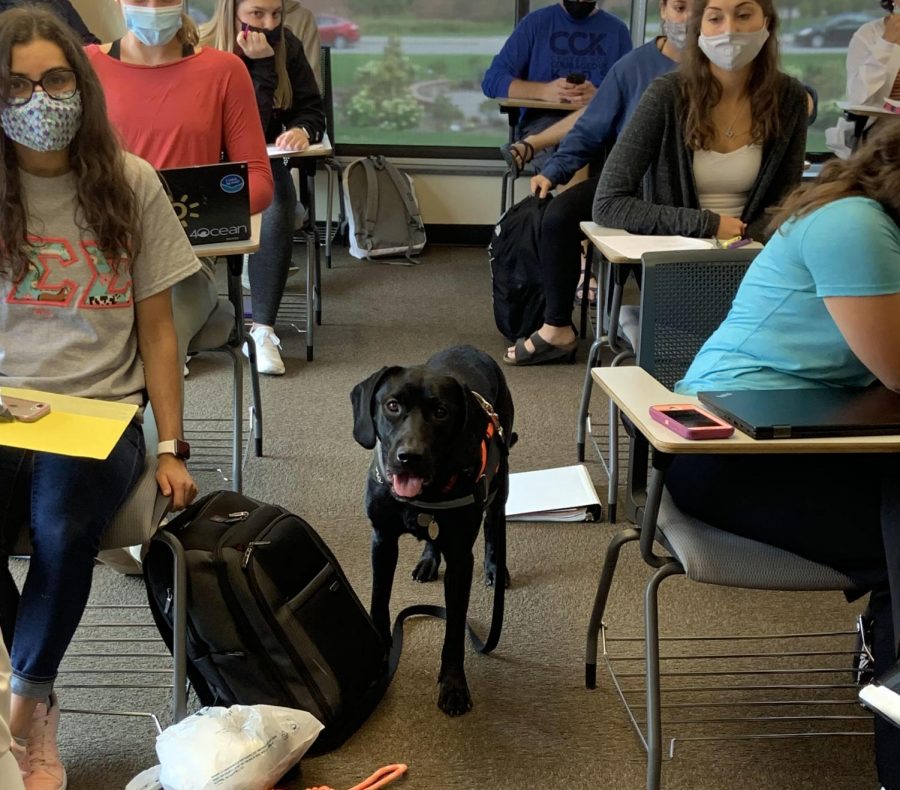Dogs in Classrooms May Promote Healthy Habits in Students
Imagine being excited to attend a difficult class, not only to learn, but to embrace the calm and comforting atmosphere of having a dog or other pet in the classroom.
Heather Vitko, an Assistant Professor of Nursing, hopes to make this vision a reality for nursing students at SFU to experience.
“Health science (fields) are intensive majors, with high-stakes exams, which often cause stress and anxiety for students,” said Vitko.
“What would be better than to pet a dog after not doing so hot on a test?”
Vitko said that researchers who have explored animal-assisted therapy have found significant differences in vital signs in patients in intensive care unit who have been exposed to dogs, versus those who have not.
“Research shows a reduction in heart rate and blood pressure when ICU patients on ventilators pet or have contact with a dog,” said Vitko.
The nursing faculty member is a firm believer in animal therapy, especially in today’s educational setting, when more and more students are struggling with depression and many are being prescribed anxiety medication.
Panther, a dog who is enrolled in the University’s K9 Learning Behavior class, attends Vitko’s Pathophysiology and Pharmacology class with a nursing student who is enrolled in this course.
“Panther has been the opposite of a disruption,” said Vitko. “He’s wonderful and very well-behaved.
“He lightens things up a little bit because we will be getting into some intense subject matter and I see the students start to zone out. All of a sudden, here comes Panther, barreling up to me at the lectern because he wants a cookie.
“This sort of wakes the students up and helps them to refocus.”
Several universities currently offer fields of study in animal therapy, and some nursing programs have a department pet that comforts students when they need it.
“The benefit of animals to humans’ emotional and psychological well-being is well-documented,” said Vitko.





